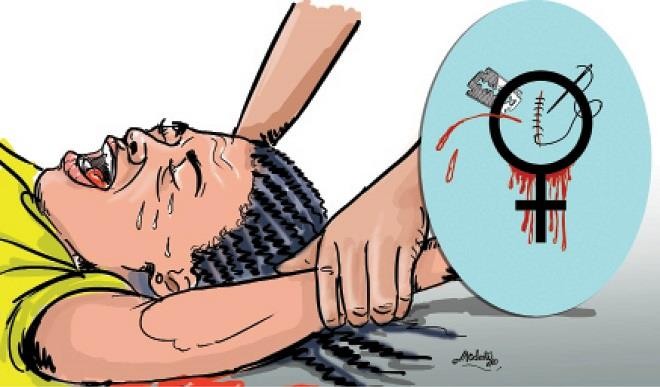A report released recently by a non-profit group has revealed that India is a hub for the controversial practice of female genital mutilation amongst both local and expat Dawoodi Bohras.
The study on the prevalence of FGM or “khafd” among the Bohras in the country is one of the first to document the impact of the practice on the victims.
Prepared by social activists Lakshmi Anantnarayan, Shabana Diler and Natasha Menon, along with WeSpeakOut and Nari Samata Manch, the study covered 94 respondents, of which 83 were women and 11 men.
Practice Widespread Amongst Bohras
The World Health Organization (WHO), defines FGM as procedures involving “the altering or injuring of female genitalia” for any non-medical purpose. It has called it as “a violation of the human rights of girls and women”.
The study titled “The Clitoral Hood a Contested Site: Khafd or Female Genital Mutilation in India” states that India remains a hub for the practice on Bohra expat/foreign girls, as legal action on FGM/C among Bohras has been taken in Australia and USA, and also due to the lack of an anti-FGM/C law in India.
Most Bohras practice Type 1 FGM/C (partial or total removal of the clitoris and/or clitoral hood/prepuce). Supporters of the practice however claim that Bohras typically carry out the ‘removal of clitoral hood’ (Type 1a) and ‘pricking, piercing, cauterization’ (Type 4 FGM/C).
Participants of the study, including a doctor (OBGYN) have observed that although both practices are prevalent among the Bohras, but there are very few cases of ‘pricking, piercing, cauterization’.
The survey also found that in urban areas, doctors in medical facilities are increasingly performing FGM in addition to traditional cutters.
The study has covered women from thirteen areas across five states – Gujarat, Madhya Pradesh, Maharashtra, Rajasthan and Kerala. Bohra expats in three countries (Canada, United Arab Emirates, and the United States of America) also participated in the study.
Additionally, traditional circumcisers, healthcare professionals, and teachers also took part in the study.
No Legal Deterrent In India
There is currently no law in India that deals with female genital cutting or mutilation, but several other countries do.
Australia sentenced three Dawoodi Bohras to 15 months in jail in 2016 under the country’s female genital mutilation law. Authorities in the US arrested two doctors in Detroit for allegedly cutting the private parts of at least six girls in 2017. The trial is still underway.
Advocate Sunita Tiwari began the fight against FGM in India in 2017 with a PIL seeking a ban on the practice.
In its response, the Ministry of Women and Child Development told the apex court in December that no data regarding FGM was available from the National Crime Records Bureau (NCRB) or other sources.
According to the study, nearly 75% of the daughters of the respondents covered in the sample group were subjected to FGM/C. The young girls usually undergo ‘khafd’ when they are about seven years old.
The report also includes personal accounts of survivors who have disclosed that the FGM is a painful experience that has left a physical scar on them .
Women Say FGM A Painful Experience
According to the report, 97% of the women in the study said Khafd was a painful experience. They have reported issues like painful urination, physical discomfort, difficulty in walking, and bleeding immediately after the procedure. Several have suffered from recurrent Urinary Tract Infections (UTIs) and incontinence in the long-term.
Poor sex drive is also another outcome with around 33% of the women believing that FGM/C has negatively impacted their sexual life due to issues like “inability to feel any sexual pleasure, difficulty in trusting sexual partners, and over sensitivity in the clitoral area.”
Globally there are around one million Dawoodi Bohras. The study stated that around 88 women participants have identified 1,248 others in their immediate family circles who had also undergone the practice.
The report further notes that men participate in ‘khafd’ both “actively and passively” and continue to have an “integral role in its maintenance and/or propagation”, not only at personal levels but also political levels.





